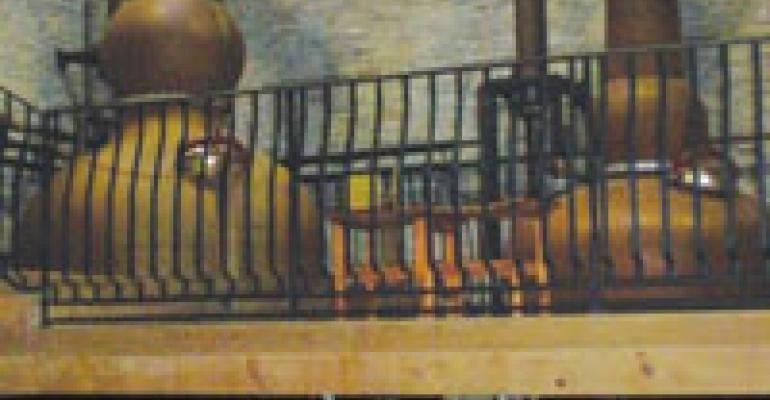Over the past decade or so, much has been made in the Scottish whisky market of special wood finishes, using everything from sherry wood to Sauternes wood in a sort of “second aging” of the spirit. What is less discussed, however, is the wood in which the whisky spends the first, and lengthiest, portion of its life, which almost always is wood that has previously held bourbon or other American whiskeys.
Because bourbons must be aged in brand new barrels, the market is flooded with used barrels that benefit not only Scottish whisky producers, but also rum distillers and countless other creators of spirits in search of a barrel, plus an ever-growing number of brewers.
But before those multitasking wooden barrels touch Scotch whisky or other spirits, they first instill critical complexity, color, and flavor to bourbon.
Contrary to popular belief, a spirit need not be distilled in Kentucky in order for it to be called bourbon, but it does have to be aged for a minimum of two years in new charred barrels made of American oak. Other American whiskeys, while not required to do so, usually follow the same rule, although not without exception.
Thus, it is in the barrel that bourbon develops a great degree of its character, arguably more so than almost any other brown spirit. If ever you’ve tried moonshine, or what passes commercially for ‘shine, you’ve tasted what bourbon would be without the effects of the barrel, which is to say a raw, relatively uncomplicated white spirit.
Once that corn whiskey hits wood, on the other hand, the magic begins. Color will come first, the degree of which will depend upon the depth of char in the barrel, which can vary from a light toast to a deep charring, according to the distillery’s specifications. Then come vanilla and various fruity notes, slowly emerging from the staves of the wood to accent the spirit, and finally, all the various and disparate elements will slowly, almost languidly mix and meld and mellow to produce the final whiskey, at last fit for bottling.
And it’s not just the wood that will exert its influence, but also the barrel’s placement within the warehouse. Warmer areas will mature faster, cooler microclimes more leisurely. Where greater seasonal differences of temperature are present, with their attendant expansion and contraction of the wood, it is likely that more evaporation, and so greater flavor concentration, will occur. For this reason, barrels are generally carefully tasted, assessed, dumped and blended together, or in industry jargon, “mingled,” prior to packaging.
Such is not always the case, however. Small batch bourbons, as their name would indicate, come from a smaller number of prime barrels, carefully mingled for maximum flavor impact, while single-barrel bourbons are the pure product of the best wood in the warehouse, known in the trade as “honey barrels.”
Having given up all this to the bourbon, the barrels are then sold off for other duties, including to very appreciative Scottish distillers. And while it may be the wine wood that received the lion’s share of the accolades across the ocean, it is without question American whiskey wood that is the workhorse of the distillery.
Stephen Beaumont is a veteran beer writer and author of five books on the subject. His writing on beer, drinks, food and travel appears in a wide variety of national and international publications.

